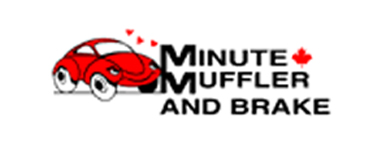BIKE DRAGS STORY
(GLOBE & MAIL JULY 26, 2006)
Published in Toronto Globe & Mail, July 27/06
By: Ted Laturnus
Ripping metal. There's no other way to describe the sound of a top fuel motorcycle drag racer. It's as though a giant pair of hands is tearing apart a huge slab of sheet metal.....like you'd rip a newspaper in half, only amplified a millionfold. The sound is overwhelming, gut-wrenching, and brutal.
To motorcycle drag racers, this is the best sound in the world, and it accompanies eye-watering bursts of acceleration, engineering expertise that would rival a space launch, and a really good relationship with lady luck. Unlike automotive drag racers, who have their powerplants either in front or behind them, bike racers usually lay right on top of their fire-breathing monsters, some of which develop 700-plus horsepower and propel the bike through a quarter mile in six seconds or less, with top speeds in excess of 320 km/h.
Relatively unappreciated but growing in popularity, motorcycle drag racing has always had a hard-core following in western Canada, and is now spreading into the east as well. Organized and promoted by the Canadian Motorcycle Drag Racing Association (CMDRA), races take place in B.C., Alberta, Ontario, and Quebec. There are ten races in all from June to September and competitors from the U.S. and Canada all vie for top honours, culminating in an "East vs. West" challenge on Sept. 16-17.
In a nutshell, the bikes are broken down into thirteen classes. All the way from nitromethane-powered Top Fuel, to wild and woolly Pro Modified, to Street, where anyone with any make of motorcycle can take a shot at the clock, providing they pass technical inspection. Because of the performance differences between pushrod V-twin type engines, and multi-valve, multi-cam screamers, you're not likely to see the two types of racers competing head-to-head….although it does happen once in awhile.
But the Top Fuel or Pro Fuel Harley-type categories often feature engines that - aside from their configuration - have little in common with the Milwaukee thumpers. It's not unusual, for example, to see Top Fuel or Pro Gas entries with automotive and even aircraft components, as well as data acquisition and electronic engine management systems,
But drag bikes don't necessarily have to be exotic. In the Street class, it's run what ya brung, and you can ride your Honda Blackbird, Kawasaki Ninja, Suzuki Hayabusa, or whatever, and race all weekend. As long as you pay your entry fee, and the bike is equipped with an electrical cutout switch and you wear a Snell-approved helmet and proper leathers, you're welcome. In some ways, the Street class is the most entertaining to watch as riders with limited racing experience try to keep their bikes under control. The Street Bike Shootout is especially entertaining, and a large turnout of competitors is virtually guaranteed.
Another simple way to enter the world of bike drags is via the 883 Class, in which more or less stock Harley-Davidson Sportsters go at it. "You can get your feet wet," explains Patti Brandle, who has been the points leader in this class for the last two years, "and you don't have to spend a lot of money to be competitive." Brandle competes with her 1992 Sportster Hugger in the Screaming Eagle 883 XL series and bears the coveted Number One plate. Typically, she'll get through the quarter-mile in the 14-second range, with top speeds of just under 160 km/h. "We're not allowed to do anything to the bike, other than pipes and carb.....what they call Stage One tuning," she explains, "heads and bottom end have to be stock, and points are calculated on results and the number of races you attend."
Brandle bought her bike new in 1992 and claims to have had "zero" problems with it. "In a perfect world", she'd eventually like to move up to the Super Gas category, where V-twin dragsters are running in the nine to
10 second category with 250 km/h speeds. But that takes time....not to mention sponsorship money. "Right now, I'm pretty much at the bottom of the ladder, but I'll get there," she smiles.
Regardless of class, bike drags are as dramatic as a bomb explosion. In the modified categories, riders heat up the rear wheel in a cloud of blue smoke, and rocket off the line. As they accelerate through the quarter-mile, you can see the G-forces pushing them back into the saddle and, sometimes, it's all they can do to keep the bike in a straight line. For a spectator, it's huge fun just watching. For the riders themselves, it seems to be equally entertaining.
It can also be dangerous. A few years ago, a Canadian rider was killed at Sacramento Raceway when the engine in his nitro-powered top fuel Harley exploded, sending a piece of shrapnel through his heart. That, however, doesn't happen very often, and racing a drag bike is less risky than bungee jumping or skydiving.
If you're interested in bike drag racing and want more information, you can check out the Canadian Motorcycle Drag Racing Association web page at www.cmdra.com.





